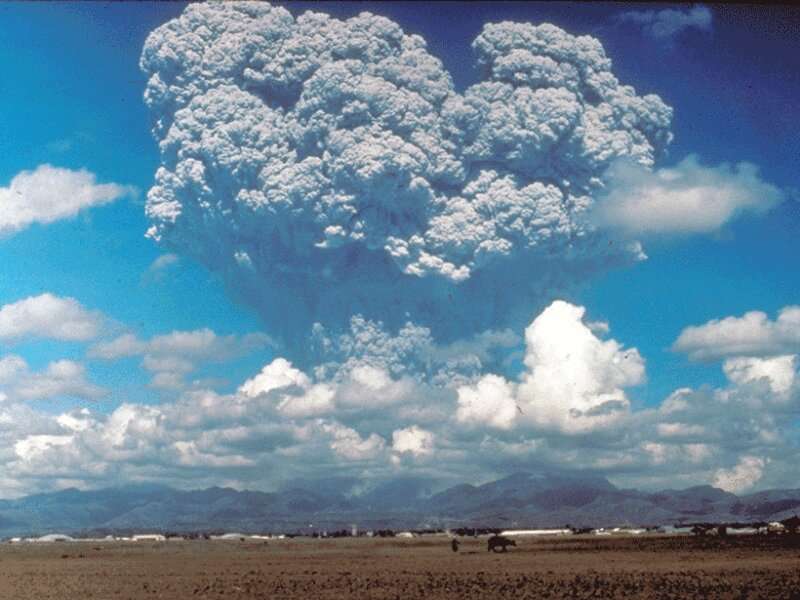The 1991 eruption of Mount Pinatubo in the Philippines ejected large amounts of ash and gases into the air. A new study examines how this debris evolved over time and how it might have entered the atmosphere. Credit: R. Batalon, provided by the U.S. Geological Survey
When a volcano violently erupts, a plume of ash and gases spews skyward. The hot slurry quickly rises into the atmosphere, where various atmospheric dynamics interact to shape the volcanic cloud's composition, height, and radiative properties. Volcanic clouds reflect solar radiation, cool Earth, cause weather extremes, and delay global warming, but scientists have long wondered exactly how volcanic material evolves and parses itself after eruption. To date, observations of the initial stage of strong eruptions have been sparse, and conventional climate models used to study the impact of volcanic eruptions cannot capture this initial stage in great detail.
In a new study, Stenchikov et al. modified a regional atmospheric chemistry model, WRF-Chem, to better capture the initial stage of volcanic cloud development. The researchers modeled the 1991 Pinatubo volcanic eruption in the Philippines for their study, assuming that along with the eruptive jet, a significant amount of volcanic debris was delivered into the lower stratosphere. They conducted simulations with 25-kilometer-grid spacing considering simultaneous injections of sulfur dioxide (SO2), ash, sulfate, and water vapor. In addition, they accounted for radiative heating and cooling effects of all plume components including gaseous SO2.
The researchers found that differential heating played an essential role in the initial evolution of a volcanic cloud and its separation into layers, which then dispersed or fell to the ground. Their new model showed that during the first week after eruption, the volcanic cloud rose into the atmosphere 1 kilometer per day, driven initially by ash solar absorption and later by sulfate aerosol absorption of solar and terrestrial radiation.
The researchers note that their findings could be helpful in many applications, from aviation safety to understanding climate and geoengineering technologies.
Animation from the study’s simulations of the evolution of volcanic plumes from the Pinatubo volcano eruption in 1991 in the Philippines. The simulation includes 25-kilometer-grid spacing considering simultaneous injections of sulfur dioxide (SO2), ash, sulfate, and water vapor. Credit: Sergey Osipov
More information: Georgiy Stenchikov et al, How Does a Pinatubo‐Size Volcanic Cloud Reach the Middle Stratosphere?, Journal of Geophysical Research: Atmospheres (2021). DOI: 10.1029/2020JD033829
Journal information: Journal of Geophysical Research - Atmospheres
Provided by Eos
This story is republished courtesy of Eos, hosted by the American Geophysical Union. Read the original story here.
























